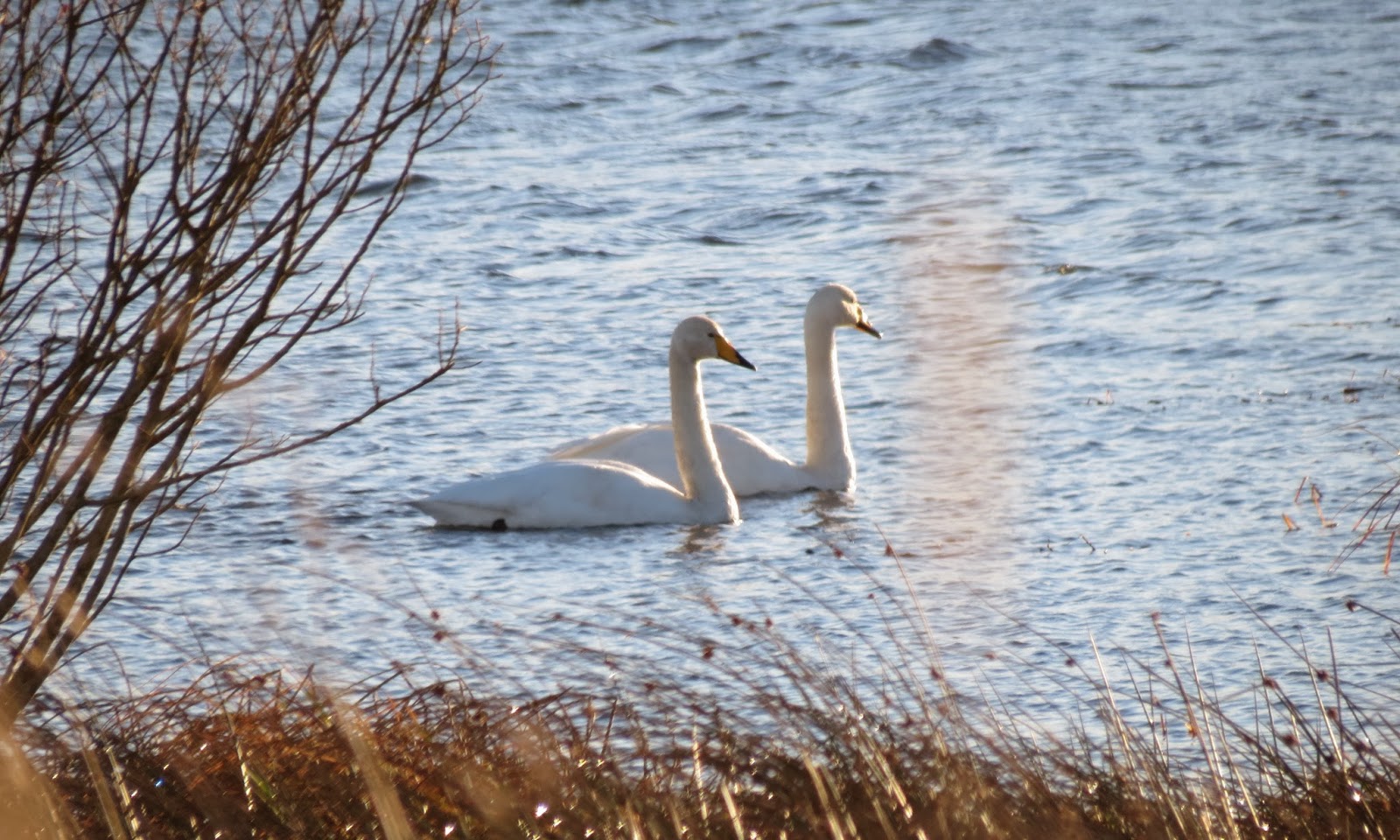THURSDAY 16 JANUARY
Although reasonably mild (at 7.5 degrees C),
it was a day of heavy showers, some of which were prolonged.
I had planned a visit to CAMBRIDGESHIRE
today, largely with the goal of connecting with TAIGA BEAN GOOSE - two of which
had been recently discovered just north of Cambridge by David & Jon
Heath.
Before I got there, I checked out a few
HERTFORDSHIRE farmland locations...........
A flock of 138 EUROPEAN GOLDEN PLOVER was in
fields at ROXLEY COURT, NE OF GREAT WYMONDLEY, whilst in the DEADMAN HILL area
of SANDON (TL 29 37), 40 Rook and 12 Eurasian Skylark were noted. The COOMBE
ROAD at KELSHALL produced a total of 51 Fallow Deer (herds of 37 and 14), 12
Brown Hares, 2 Common Magpie, 2 Carrion Crow, several Common Pheasant, Common
Buzzard and a party of 7 Great Tits. In the vicinity of LOWER HEATH FARM (TL 32
37), I added Common Kestrel, 6 Woodpigeon, 8 Carrion Crow, a Jackdaw and a
further 18 Rook.
Fallow Deer herd
I then arrived in CAMBRIDGESHIRE where
checking LANDBEACH ROAD near MILTON, a flock of 99 Greylag Geese was feeding
just east of the cemetery. At the CAMBRIDGE RESEARCH PARK LAKES, both TAIGA BEAN
GEESE (seemingly an adult pair) were roosting on the island in front of the
hide, along with 59 Greylag Geese. After a long wait, one-by-one the Greylags
started waking up and getting into the water, flying off in small flocks. The
two TAIGA BEANS were virtually the last to move, eventually giving great views
as they swam away to the left. I took a number of photographs (see immediately
below), the two birds being extensively orange on the bill, fairly thick-necked,
long-necked and almost Greylag-like in proportions.
In addition to the geese, the lake also held
46 Mallard, 34 Gadwall, 24 Teal, 7 Shoveler, 46 Pochard, 36 Tufted Duck, 33 Coot
and 5 Mute Swans, as well as an assortment of gulls. A lake much closer to the
research park added a further 46 Coot, 35 Tufted Duck and 3
Moorhens.
Returning to the LANDBEACH ROAD, I came
across a huge flock of roosting large white-headed gulls in the fields to the
south and west of the cemetery - just under 2,300 in number. The flock included
singleton first-winters of both CASPIAN and YELLOW-LEGGED GULL, along with 175
Black-headed, 144 Common, an impressive 1,256 Herring (over 70% of which were
Scandinavian Argentatus), 637 Lesser Black-backed (of both
intermedius and graellsii forms) and a notable 76 Great
Black-backed. Further south and much closer to MILTON TIP was another large
roosting flock, this one supporting some 8 YELLOW-LEGGED (including 6 adults), a
further 848 Herring (again, a large proportion of northern birds), 603 Lesser
Black-backed, 97 Common, 437 Black-headed and another 21 Great
Black-backed.
The first huge flock of gulls - just under 2,300 in number
Superb numbers of both Herring and Lesser Black-backed Gulls
The second flock - opposite Milton Tip
I then drove north to HOLME FEN (TL 20 89),
where the GREAT GREY SHRIKE was visible from the Trundle Mere Hide in bushes
close to the red-and-white marker poles to the NE. A single MARSH HARRIER was
seen, along with 9 CORN BUNTINGS, 3 Reed Bunting, 3 Meadow Pipit, 4 Stock Dove,
49 Fieldfare, 5 Common Kestrel, 8 Goldfinch and Wren. Most significant was up to
6 SHORT-EARED OWLS hunting over the vast rough fields to the east of the
reserve; the HOODED CROW was in this area too - about a mile up the road with 36
Carrion Crows.
Short-eared Owls hunting distantly over the fields


































































































